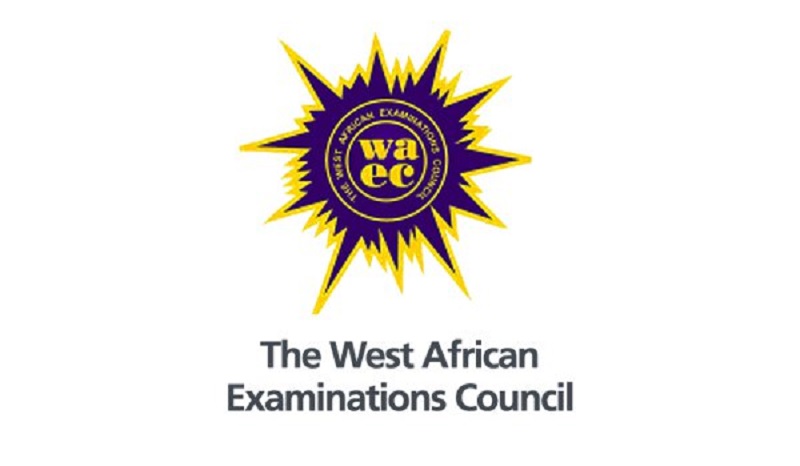WAEC Financial Accounting Questions and Answers 2023

The West African Examination Council (WAEC) is a well-respected organization responsible for conducting examinations across the West African region. One of the essential subjects in this examination is Financial Accounting, which tests candidates’ knowledge and understanding of financial principles, practices, and techniques. In this guide, we will cover everything you need to know to succeed in the 2023 WAEC Financial Accounting examination, including objectives, theory questions, past questions, and more.
1. Introduction to WAEC Financial Accounting
Financial Accounting is a crucial subject in the WAEC examination, as it equips students with the necessary knowledge and skills to analyze, interpret, and communicate financial information in various business contexts. The WAEC Financial Accounting examination is divided into two sections: Objectives and Theory.
1.1 Objectives Section
The Objectives section comprises multiple-choice questions that test candidates’ knowledge and understanding of essential financial accounting concepts, principles, and practices. This section requires candidates to choose the correct answer from a list of options provided.
1.2 Theory Section
The Theory section of the Financial Accounting examination assesses candidates’ ability to apply financial accounting concepts, principles, and practices to solve practical problems. This section requires candidates to provide well-structured, clear, and concise written responses to the questions asked.
2. WAEC Financial Accounting Objectives Questions
The Objectives section of the WAEC Financial Accounting examination tests candidates on various topics related to financial accounting. Here are some sample objective questions to give you an idea of what to expect:
- The primary purpose of preparing a trial balance is to:
- A. determine the profit or loss of a business
- B. ascertain the financial position of a business
- C. verify the arithmetic accuracy of the ledger
- D. prepare the final accounts
CORRECT ANSWER: C (Verify the arithmetic accuracy of the ledger)
- Depreciation is a method of allocating the cost of a:
- A. tangible asset
- B. current asset
- C. fixed asset
- D. long-term liability
CORRECT ANSWER: C (Fixed asset)
- The double-entry bookkeeping system requires that for every transaction:
- A. a debit entry must be recorded first
- B. a credit entry must be recorded first
- C. at least two accounts are affected
- D. only one account is affected
CORRECT ANSWER: C (At least two accounts are affected)
3. WAEC Financial Accounting Theory Questions
The Theory section of the WAEC Financial Accounting examination tests candidates’ ability to apply their knowledge of financial accounting concepts, principles, and practices to solve practical problems. Here are some sample theory questions to give you an idea of what to expect:
- Explain the importance of financial accounting in business decision-making.
ANSWER: Financial accounting provides essential information about a company’s financial performance and position, which is crucial for making informed business decisions. This information helps stakeholders, such as investors, creditors, and management, evaluate the company’s profitability, liquidity, solvency, and overall financial health. As a result, financial accounting plays a critical role in ensuring that businesses allocate resources efficiently, manage risks effectively, and achieve their strategic objectives.
- Differentiate between accrual basis accounting and cash basis accounting.
ANSWER: Accrual basis accounting and cash basis accounting are two distinct methods used to record financial transactions.
Accrual basis accounting recognizes revenues when they are earned and expenses when they are incurred, regardless of when cash is received or paid. This method provides a more accurate picture of a company’s financial performance and position, as it takes into account all financial activities during a specific period, not just cash transactions.
Cash basis accounting, on the other hand, records revenues when cash is received and expenses when cash is paid. This method is simpler and easier to maintain but may not accurately reflect a company’s financial performance and position, as it ignores outstanding receivables and payables.
4. Past WAEC Financial Accounting Questions and Answers
Studying past WAEC Financial Accounting questions and answers can be an excellent way to familiarize yourself with the examination’s format and structure. It also helps you identify essential topics and areas where you may need to improve your understanding. Here are some past questions and answers to help you in your preparation:
4.1 Past Objectives Questions
- A sole proprietorship is a business organization owned by:
- A. one person
- B. two persons
- C. three persons
- D. four persons
CORRECT ANSWER: A (One person)
- The accounting equation is expressed as:
- A. Assets = Liabilities + Equity
- B. Assets = Liabilities – Equity
- C. Assets = Equity – Liabilities
- D. Equity = Assets – Liabilities
CORRECT ANSWER: A (Assets = Liabilities + Equity)
4.2 Past Theory Questions
- Describe the role of an auditor in the financial reporting process.
ANSWER: An auditor plays a crucial role in the financial reporting process by providing an independent and objective assessment of a company’s financial statements. This involves examining the company’s accounting records, internal controls, and financial statements to ensure that they are prepared in accordance with applicable accounting standards, laws, and regulations. The auditor’s primary responsibility is to express an opinion on whether the financial statements present a true and fair view of the company’s financial performance and position. By doing so, auditors enhance the credibility and reliability of financial information, which is vital for stakeholders’ trust and confidence in the company.
5. WAEC Financial Accounting Marking Scheme
Understanding the WAEC Financial Accounting marking scheme is essential for candidates to know how their answers will be assessed and graded. The marking scheme provides a detailed guide on the allocation of marks for each question and the expected level of detail and accuracy in candidates’ responses. Here’s a brief overview of the marking scheme for both the Objectives and Theory sections:
5.1 Objectives Marking Scheme
In the Objectives section, each correct answer is awarded one mark. There are no negative marks for incorrect answers, so candidates are encouraged to attempt all questions.
5.2 Theory Marking Scheme
The Theory section’s marking scheme is more complex, as it considers various factors such as the accuracy, relevance, clarity, and organization of candidates’ responses. Marks are typically allocated for each point or explanation provided in the answer, with additional marks awarded for well-structured, coherent, and concise responses.
6. Tips for Success in WAEC Financial Accounting
To excel in the WAEC Financial Accounting examination, candidates should follow these essential tips:
- Understand the examination format and structure: Familiarize yourself with the Objectives and Theory sections and their respective marking schemes.
- Study the syllabus thoroughly: Ensure you cover all topics and concepts outlined in the WAEC Financial Accounting syllabus.
- Practice past questions: Regularly attempt past WAEC Financial Accounting questions and answers to identify areas of improvement and enhance your understanding.
- Develop effective study habits: Create a study schedule, set goals, and use various learning resources to strengthen your knowledge and skills.
- Manage your time wisely: Allocate sufficient time for each question during the examination and avoid spending too much time on a single question.
- Write clear and concise answers: Ensure your responses are well-structured, coherent, and free of grammatical errors.
7. WAEC Financial Accounting Examination Timetable
The WAEC Financial Accounting examination is usually scheduled according to the official WAEC timetable. Candidates should regularly check the official WAEC website or their schools for updates on the examination timetable and any changes that may occur.
8. Studying and Preparing for WAEC Financial Accounting Exam
Preparing for the WAEC Financial Accounting examination requires dedication, discipline, and effective study techniques. Candidates should create a study plan that covers all topics in the syllabus, allocate sufficient time for each topic, and use various learning resources such as textbooks, online tutorials, and past questions to enhance their understanding.
Furthermore, candidates should practice answering both objectives and theory questions under examination conditions to improve their time management and problem-solving skills. Regular revision and self-assessment are also crucial for retaining information and tracking progress.
9. WAEC Financial Accounting Expo and Runs
While some candidates may be tempted to rely on WAEC Financial Accounting expo and runs, it is essential to note that such practices are unethical and can lead to severe consequences, including disqualification from the examination. Instead, candidates should focus on thorough preparation and effective study techniques to achieve success in the WAEC Financial Accounting examination.
10. Conclusion and Recommendations
In conclusion, the WAEC Financial Accounting examination is an essential assessment of candidates’ knowledge and understanding of financial accounting principles, practices, and techniques. By following the tips and guidelines provided in this comprehensive guide, candidates can significantly enhance their chances of success in the 2023 examination. Remember to study diligently, practice past questions regularly, and maintain a positive attitude throughout your preparation journey. Good luck!
Inputs














